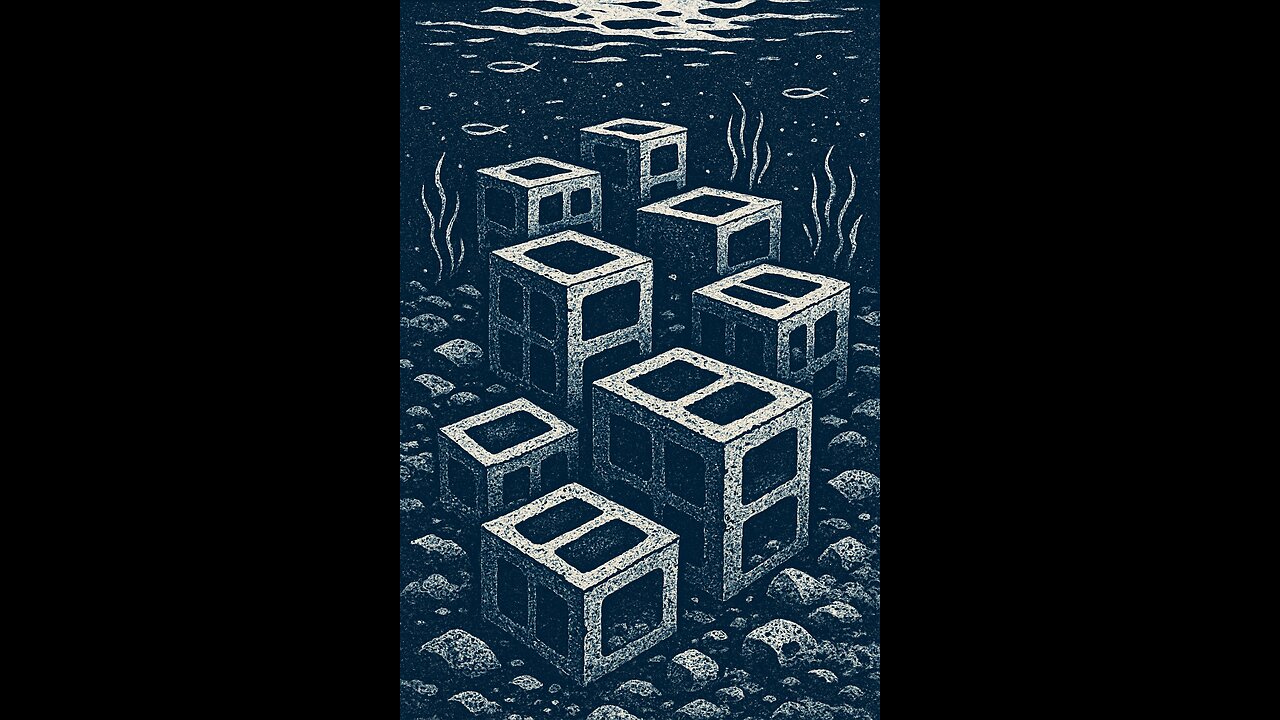Premium Only Content

Concrete Reefs
Concrete cinder blocks are increasingly used in artificial reef construction due to their porous texture, structural complexity, and chemical stability in marine environments, which together facilitate marine biodiversity colonization.
The surface roughness and crevices of cinder blocks provide ideal microhabitats for sessile organisms like barnacles, tunicates, coralline algae, and soft corals to attach and grow, forming the base of a developing reef ecosystem.
Their modularity allows them to be stacked or clustered in ways that mimic natural reef topography, offering shelter and breeding grounds for crustaceans, mollusks, and reef fish such as damselfish and blennies.
Over time, biofouling and carbonate deposition integrate the blocks into the surrounding benthic environment, enhancing their ecological value.
Additionally, concrete's pH can be tuned during mixing to better match seawater conditions, minimizing leaching and encouraging rapid colonization by marine larvae, thus accelerating the succession toward a stable and biodiverse artificial reef system.
-
 1:05:57
1:05:57
Sarah Westall
3 hours agoThe Story the DOJ, the FBI and the Media doesn’t want you to Know w/ Christina Bobb
3.41K2 -

IsaiahLCarter
1 day agoGraham Linehan: A Mess of Courage and Conviction || APOSTATE RADIO 034
2.45K -
 LIVE
LIVE
Tundra Tactical
4 hours ago🛑LIVE NOW!! Honest Gun Company Slogans Gun Mad Libs and Much More
147 watching -
 LIVE
LIVE
MattMorseTV
5 hours ago $2.02 earned🔴Senate VOTES to END the SHUTDOWN.🔴
9,756 watching -

Barry Cunningham
1 day agoBREAKING NEWS: DID PRESIDENT TRUMP MAKE A HUGE MISTAKE? SOME SUPPORTERS THINK SO!
32.3K15 -
 LIVE
LIVE
SpartakusLIVE
3 hours agoSOLOS on WZ || #1 Challenge MASTER is BACK in Verdansk
382 watching -
 LIVE
LIVE
megimu32
2 hours agoOFF THE SUBJECT: Chill Stream, Music & Fortnite Chaos 🎹🎮
74 watching -
 2:24:09
2:24:09
vivafrei
12 hours agoEp. 290: Canada's Darkest Week; Comey Fix is In! Tariffs, SNAP, Hush Money Win & MORE!
206K146 -
 LIVE
LIVE
EricJohnPizzaArtist
5 days agoAwesome Sauce PIZZA ART LIVE Ep. #68: DDayCobra Jeremy Prime!
241 watching -
 LIVE
LIVE
meleegames
2 hours ago32X Roulette - 30 Years. 32 Games. 32X.
84 watching